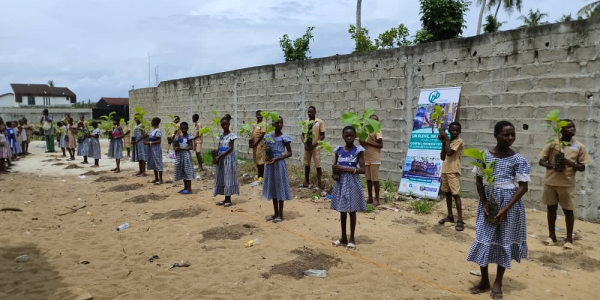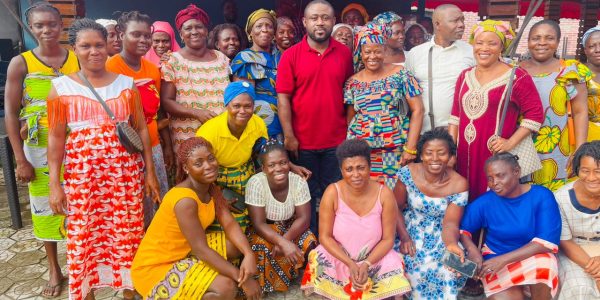A follow-up visit to the achievements of Inades-Formation Burundi within the framework of the project “Transition to a Peasant Agroecology for Food Sovereignty”, TAPSA, was carried out in the Kigoma hills of Bugabira and Nyemera, NTEGA Commune and Kirundo Province ( North of the country) on November 12, 2021 by the Governor of Kirundo Province accompanied by the local administrators of Bugabira and Ntega communes with the team of Inades-Formation Burundi, the organizer of the visit.
The Governor of Kirundo, Mr. Albert HATUNGIMANA calls upon the administrators, the heads of the zones, the elected hill officials and the technical services to appropriate the achievements of Inades-Formation Burundi in order to perpetuate them. These achievements are located in the buffer zones of Nagitamo, Mwungere and Gacamirinda lakes. These lakes are protected for 50 m around them by trees, anti-erosion ditches reinforced with fixation grasses installed on the hills above them and a canal separating the buffer zone (50 m strip) of the lakes from third party properties. The lake farmers claim that fish production and water quality in the protected lakes have improved as a result of Inades-Formation Burundi’s achievements.
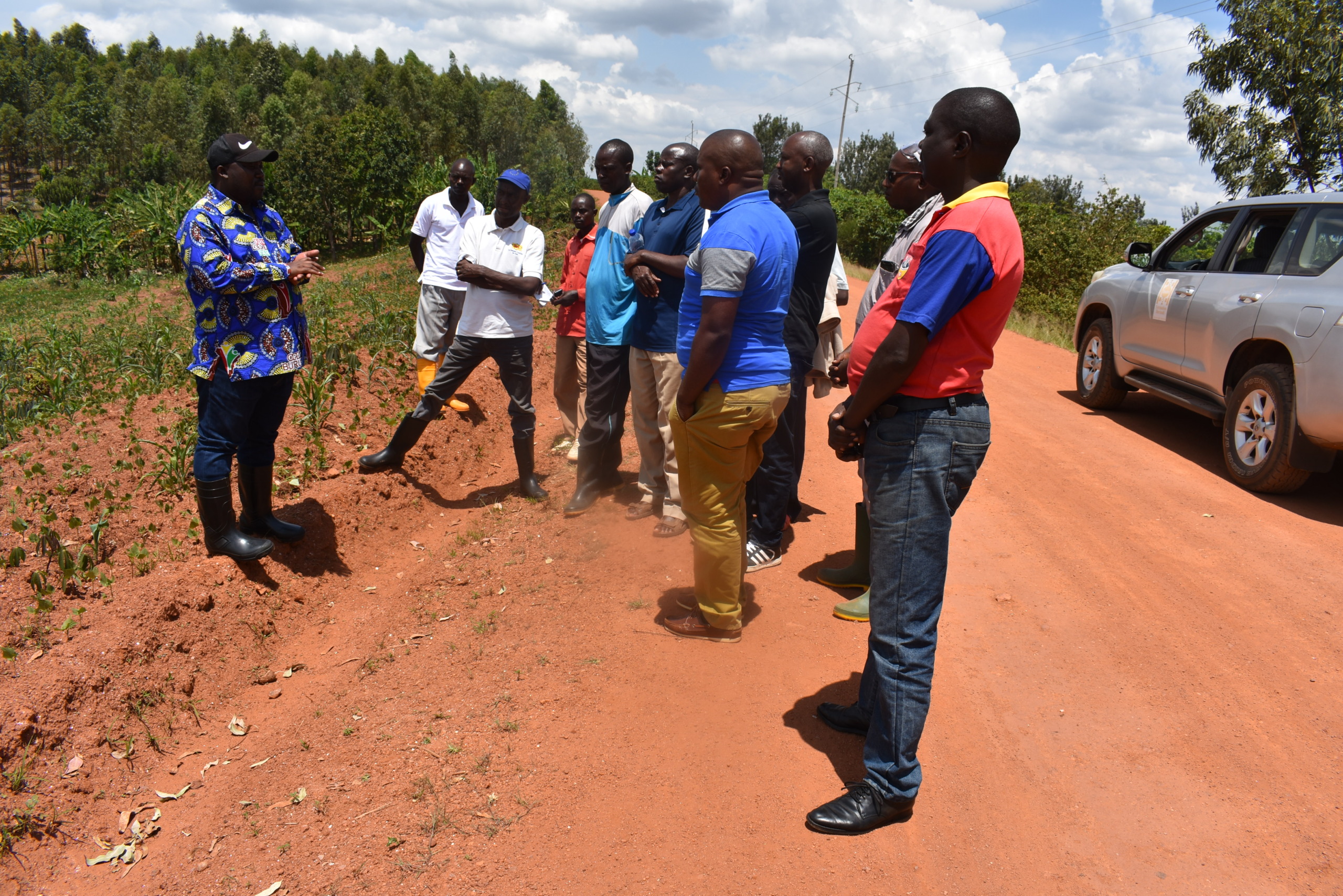
The objective of the visit was to see the achievements of Inades-Formation Burundi which are capitalizable and in line with the priorities of the Government including the project “Ewe Burundi urambaye” and the challenge of His Excellency the President of the Republic “Umunwa wose uronke ico ufungura; Umufuko wose uronke amafaranga.
At the Kigoma hill in the Bugabira commune, the visit focused on the work in progress to build anti-erosion ditches over a linear length of 80 km. The work of digging and planting of fixation grass is at 80%. It should be remembered that the approach adopted by the organization to carry out this type of work is a watershed community approach. The producers grouped in Community Base Organizations (CBO) contribute 40% and the project 60%.
The Governor of Kirundo province supports the community-hill approach adopted by Inades-Formation Burundi because it facilitates the direct and visible identification of results. He called on other speakers to do the same. He recommends to the municipal agronomist to coordinate the interveners in order to avoid duplication and the recovery of the results of the other. If Inades-Formation Burundi is already working with a given target group, another worker who leads almost similar activities must choose his own target group.
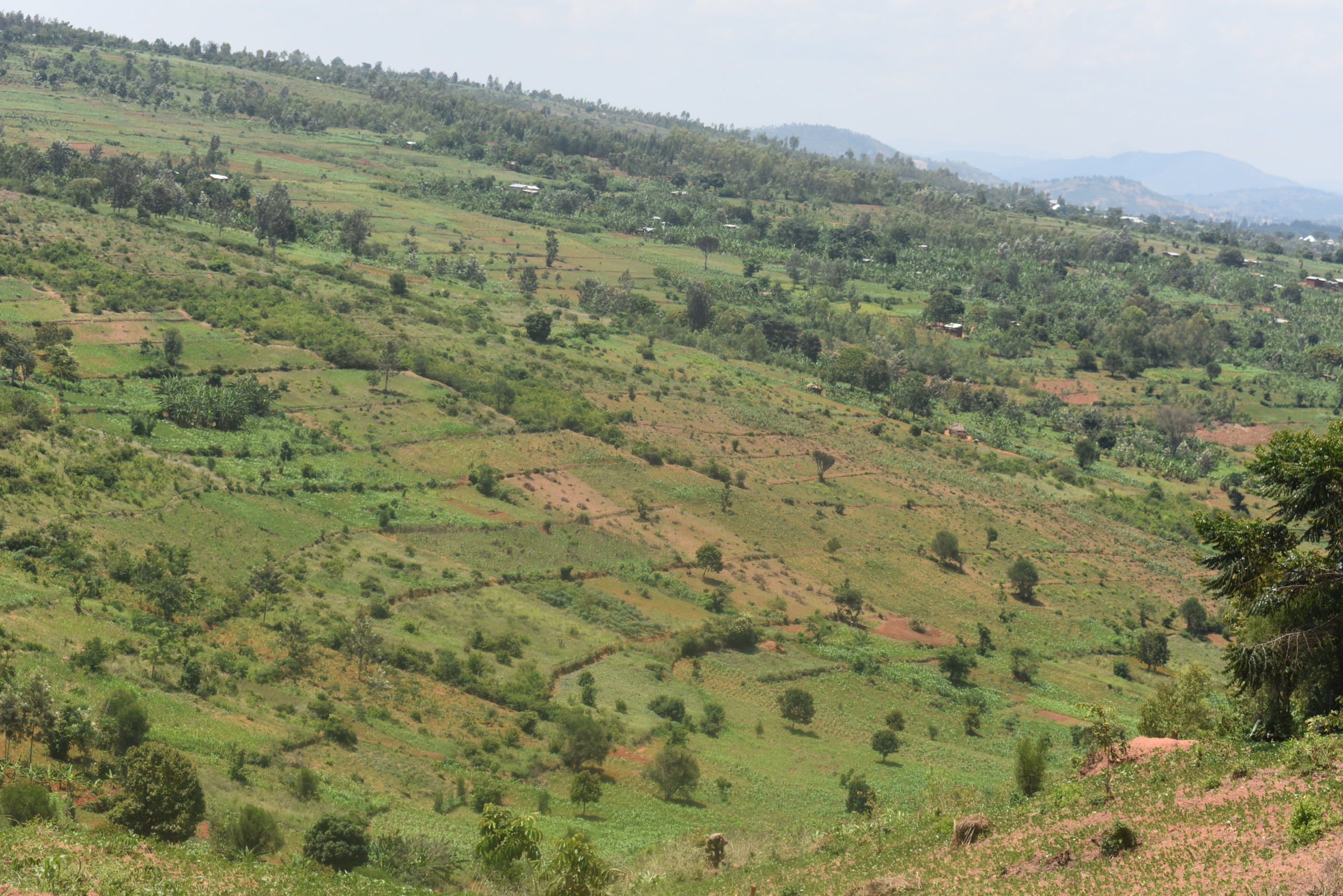
At the bottom of the same Kigoma hill; Lake Nagitamo was also visited. The 50 m buffer zone is protected by umurera and grevillea trees planted and maintained by the community supervised by Inades-Formation Burundi in the framework of its projects. The provincial authority on the ground is satisfied with the way the lake is protected and appreciates the work done by Inades-Formation Burundi in close collaboration with the local administration, the security agents, the technical services and the accompanied riverside community.
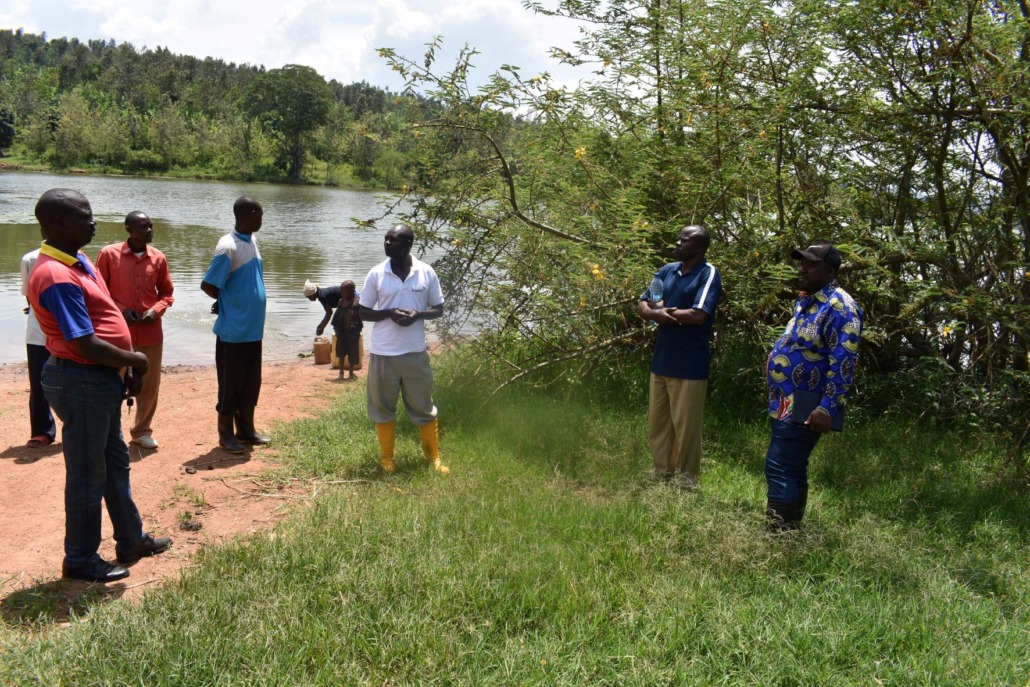
The lake is managed by two fishermen’s cooperatives and the local administration. When a decrease in fish is observed, a pause is observed and the lake is closed for 2 weeks to promote the replenishment of the fish stock to be caught. It was found that the buffer zone of Lake Nagitamo is respected and the general use of appropriate fishing tools is de rigueur. Isolated cases of fishermen using inappropriate nets are denounced and brought to justice. The Governor of Kirundo affirms that he will make every effort to discourage such abuses. Anyone who does not respect the environment in accordance with the law in force in Burundi will be severely punished, he added. He promised to provide fishermen with a motorized dugout canoe in order to improve the fishing activity and the security situation on Lake Nagitamo. This is all the more important as fishermen currently use small, locally-made pirogues with very limited capacities.
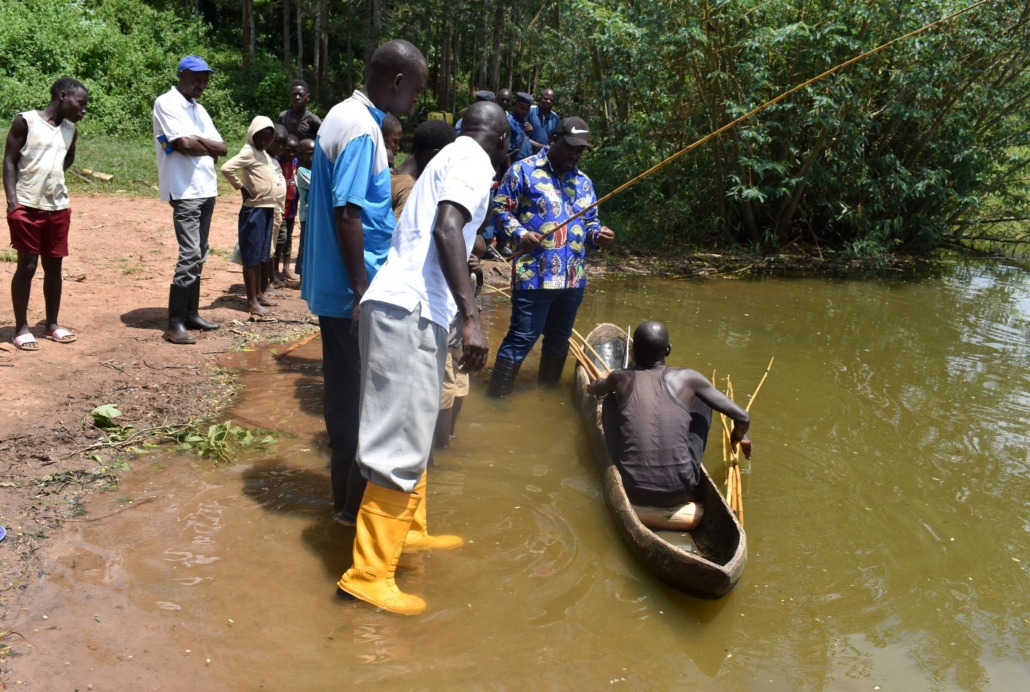
The same visit was made to Nyemera hill in Ntega commune on Lake Mwungere. The local administrators and the accompanying members of the OCBs warmly welcomed the provincial authority. The representative of the OCBs on the Nyemera and Mariza hills summarized the achievements of protecting the lake from the buffer zone to the hills overlooking it through the support of Inades-Formation Burundi through the TAPSA project. The current digging of the anti-erosion ditches will be completed during the next short dry season. It is planned a linear length of 50 km and the planting of fixing grasses.
(…)
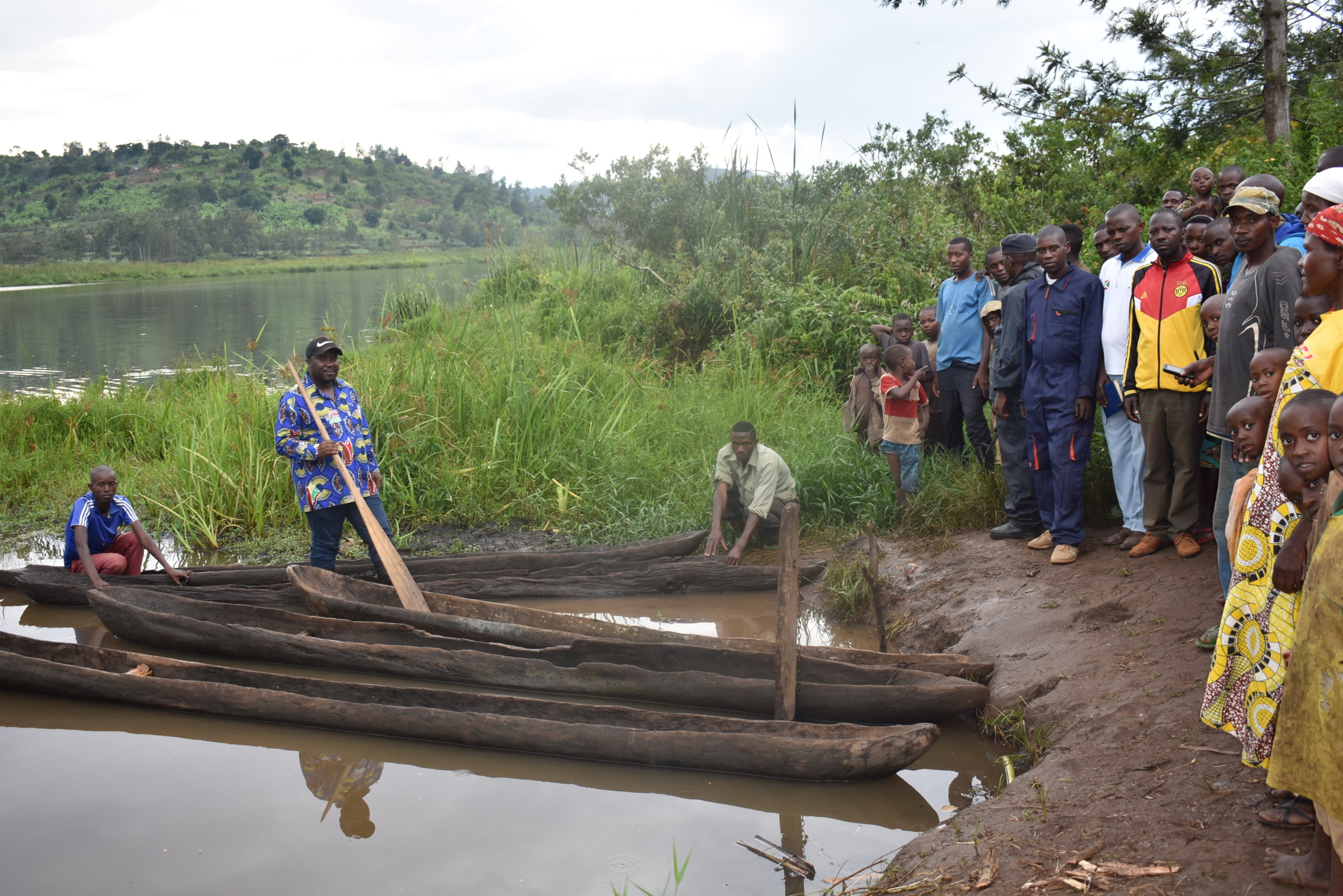
The governor also appreciated the way in which the lake is protected and he called on the population of the two hills and the administrators to take ownership of the results for their perpetuation. He recommended that they continue the cleaning of the anti-erosion ditches and the replanting of fixation grasses as well as the planting of trees around the lakes to fill the empty spaces.
Inades-Formation Burundi should capitalize on the results achieved in the protection of lakes and their watersheds to inform partners interested in collaboration. The governor asked Inades-Formation Burundi to also protect Lake Narungazi which occupies the same wetland as Lake Mwungere.
The initiative of Inades-Formation to build the hangar of the Kigoma cooperative for the storage of production under the TAPSA project was recognized by the governor. He calls on the leaders of the cooperative to develop projects for fundraising for self-promotion. In view of his achievements, he promised to put the Kigoma cooperative on the list of cooperatives in the province which should benefit from the funding. The cooperative must present a salable business plan.
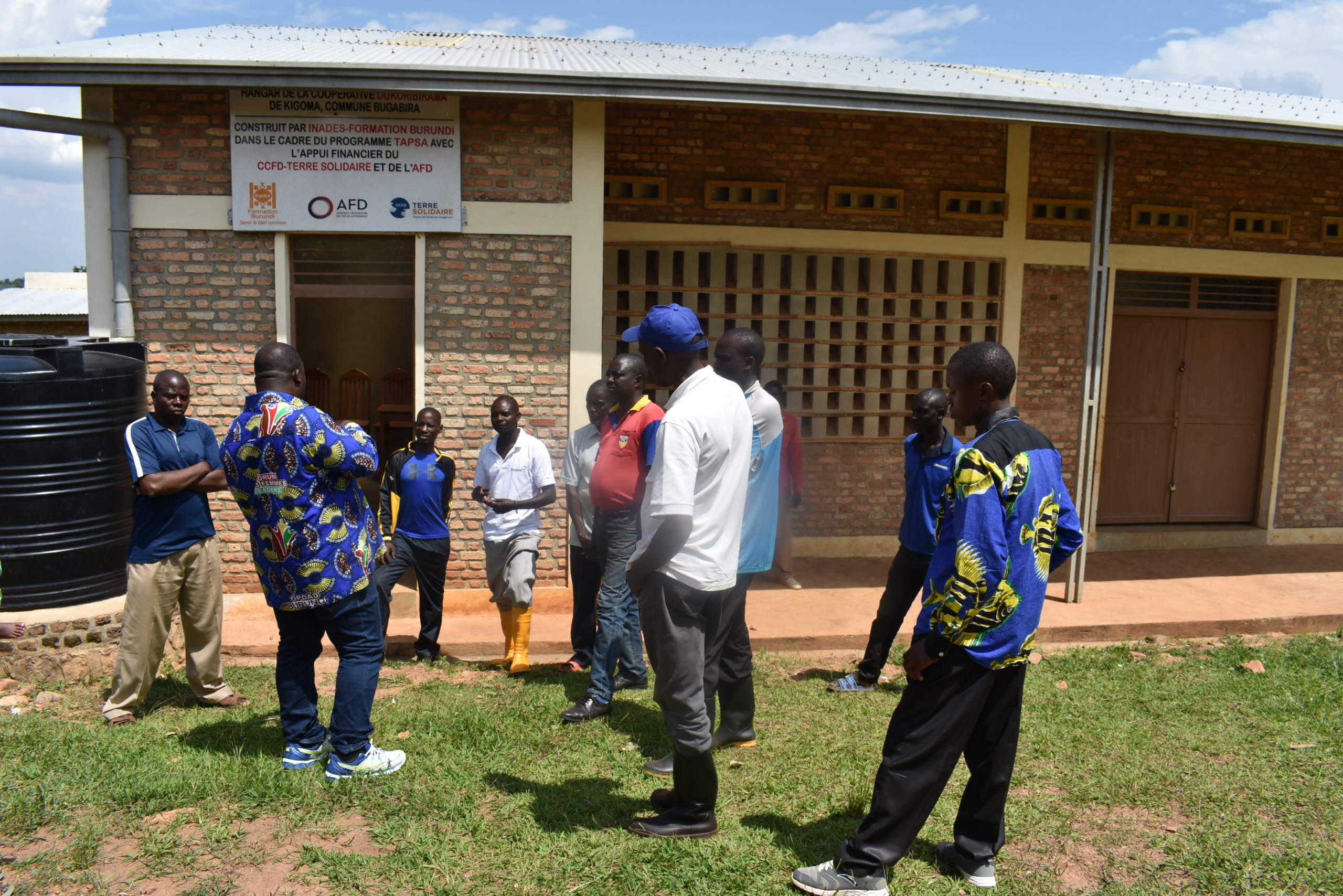
As a prospect, the governor plans to mobilize the partners to develop tourist sites on the protected lakes. To increase visibility and avoid the recovery of Inades-Formation Burundi’s results, the governor grants permission to install a sign indicating the protected area, the activities carried out and any information deemed necessary. The municipality, in collaboration with the inhabitants of the hill concerned, must develop a road that leads to the lake for greater accessibility and create a place upstream of the lake to do laundry in order to limit pollution of the lake water.
Let’s perpetuate the results of our projects in collaboration with the local administration !!!
Communication services Inades-Formation Burundi





